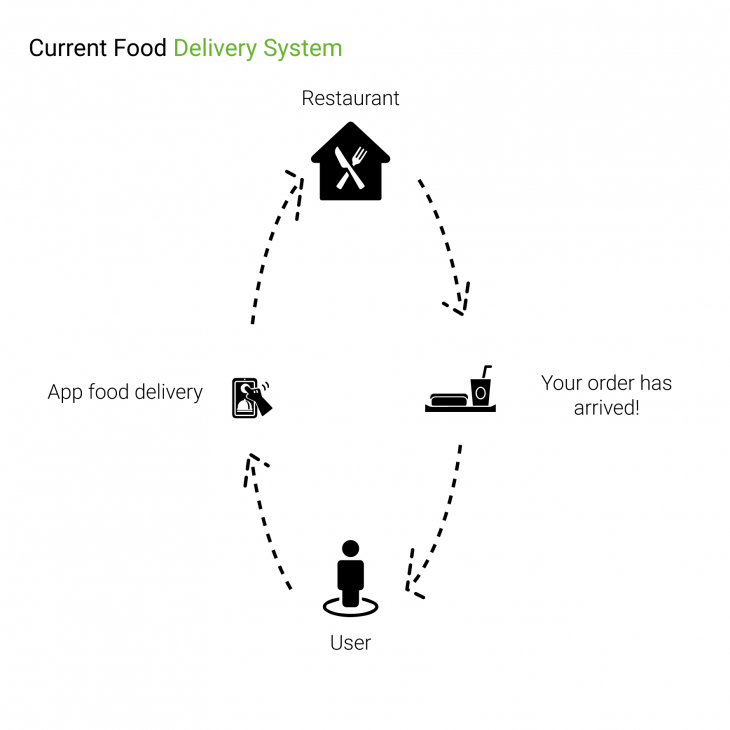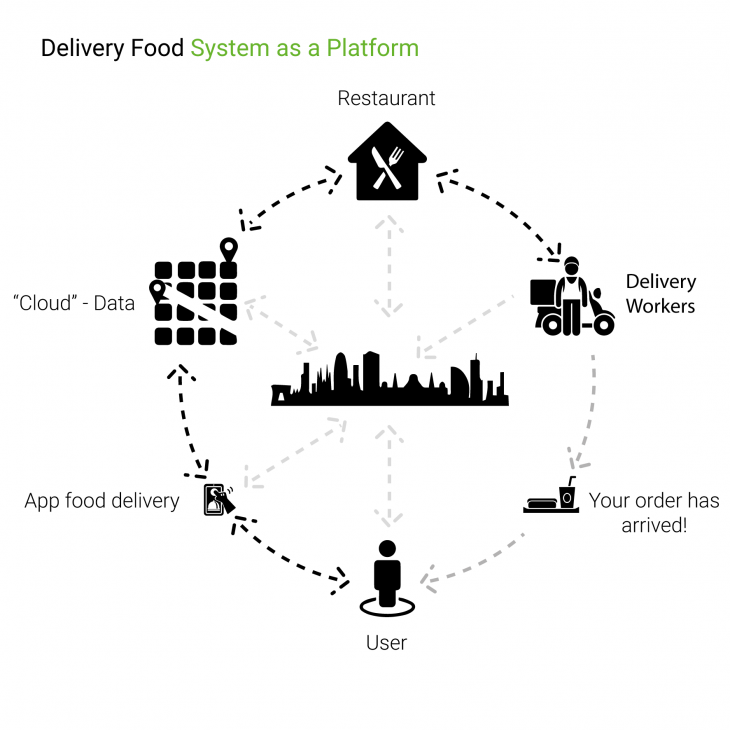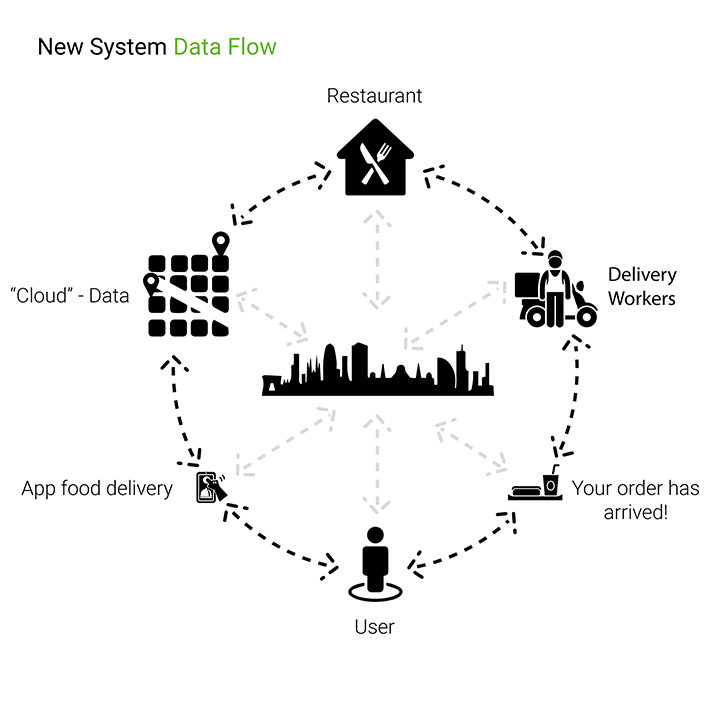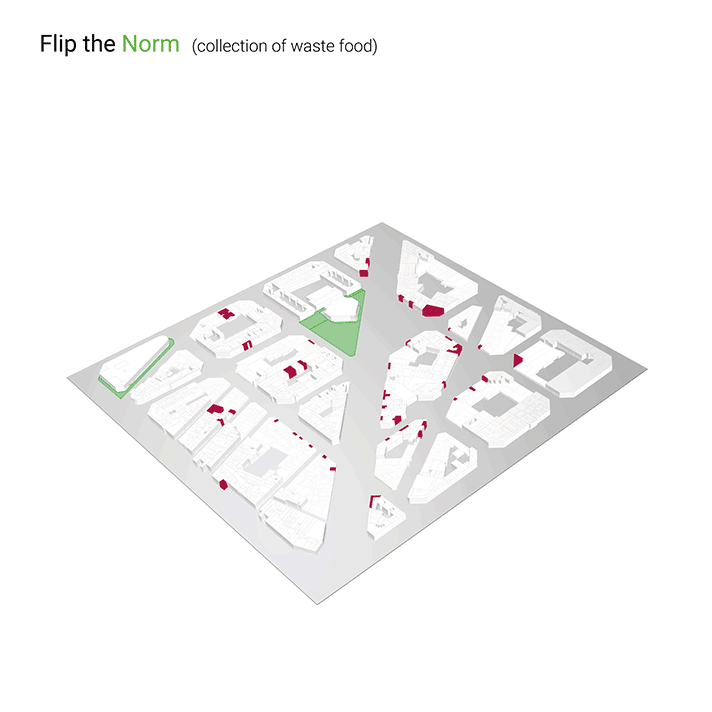Food Delivery Apps:
Apps make easier access to services, from mobility to food delivery. The technological revolution impacts the way we live and it promises us the possibility to have al kind of information or service so close, just by the touch of a finger, the access to al kind of food gives the power to select, to have unlimited food catalog with al variety and al tastes, like a magic trick where the user just by the moving of his hand can choose from tacos, sushi or kebabs, but are we really know how the delivery food platform works? or even though, shall we know something about the workers which made this possible?

We think that delivery platforms as entities that work with the “cloud”, where the data information travels on the air to the restaurant, which receives the information and then sends the food to us. If we are considerate, we pay an extra tip for the restaurant and all the workers involved.
Unfair Reality:
Nowadays food delivery apps became an important structure to the city by the current pandemic situation. Now it’s impossible not to think about order our favorite meal using whatever app, or buy all pantries just by clicking the screen of a smartphone. These apps convert rapidly an essential part of the distribution chain of the cities, modifying the structure to create new rules also converting that information into data.

Now it’s a piece of sharing information between users – platforms – restaurants but delivery workers are not the main stakeholders but it is important to the chain, and even when food apps are booming, their workers are often struggling, distribution employees have been essential to feeding the cities but their work conditions are incredibly poorly.
New opportunities:
To recognize delivery workers as a fundamental stakeholder for delivery chain supply in the city can improve its working conditions, also the data created by their work can be fundamental to understand the city metabolism and create the management of food waste. Re distributing the exceed of food to urban infrastructure like communal kitchens, delivery workers change their position to being an essential part of the functionality for the city as a circular economy.
To be a supplier, the government can consider delivery workers as a state employee in charge of food waste distribution to the communal kitchen or like in Barcelona is well known “Menjador Social”, bringing them an opportunity to get access to better legal benefits such as affordable housing, health care, vacations or bank accounts, improving its relation between delivery workers – City – Government, where also municipalities had a benefit from the new taxes from supply employees and revenue from the accurate food management in the city with the communal kitchens.
Waste Management:
Restaurants can be connected by the red of delivery workers to manage their food exceed and bringing that into the communal kitchens (menjador social), where people of low resources can have access to worthy alimentation, changing the role of the communal kitchens as a fundamental part of city infrastructure. Thinking further converting them into waste managing centers where marketplaces can be integrated as a new stakeholder, which sends its exceed of food to the “menjadores sociales” to administrate their scraps.

Food becomes Data:
As a platform delivery apps can bring to the city better accurate data about their waste of food, which brings new information to the governments to make decisions about waste food, distribution, production, and supply chain administration. It opens the possibility to create new uses of the exceed food such as new materials, biomass energy, or even urban gardens with their compost, generating movement of reciprocity inside the city for a better circular economy and habitat administration.


Food delivery – your order has arrived! is a project of IAAC, Institute for Advanced Architecture of Catalonia developed at Master in City & Technology in 2020/21 by students: Sasan Bahrami, Miguel A. Tinoco & Ivan Reyes, and faculty: Nicolay Boyadjiev.